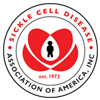Trusted Resources: Evidence & Education
Scientific literature and patient education texts
Determining Adherence to Quality Indicators in Sickle Cell Anemia Using Multiple Data Sources
source: American Journal of Preventive Medicine
year: 2016
authors: Neunert CE, Gibson RW, Lane PA, Verma-Bhatnagar P, Barry V, Zhou M, Snyder A
summary/abstract:INTRODUCTION:
Advances in primary prophylaxis have resulted in improved outcomes for patients with sickle cell anemia (SCA; i.e., hemoglobin SS- and Sβ(0)-thalassemia). Standard prophylactic measures include a first pneumococcal polysaccharide vaccine (PPV) and transcranial Doppler ultrasound (TCD) at age 2 years. Though efficacious, evidence suggests that delivery of these interventions is suboptimal. This study reports adherence to these measures and examines concordance across various data sources, using Registry and Surveillance for Hemoglobinopathies project data.
METHODS:
Retrospective database and SCA center chart review identified children with SCA aged 24-36 months between January 1, 2004, and December 31, 2008. PPV and TCD administration were determined through Medicaid and Children’s Health Insurance Program administrative claims data, medical record review, and Georgia Registry of Immunization Transaction and Services. Analysis was conducted in 2015.
RESULTS:
A total of 125 children met inclusion criteria. Forty-five (36.0%) children had documentation of both interventions, whereas 19 (15.2%) had no documentation of either intervention. Sixty-one (48.8%) children obtained only one intervention. Of these, more were likely to have had PPV than TCD (77.0% vs 23.0%, respectively, p<0.001). Agreement between claims data and medical record review was moderate for PPV (κ=0.55) and substantial for TCD (κ=0.74).
CONCLUSIONS:
No single, reliable data source for tracking standard of care for children with SCA statewide was found. According to study data, prophylaxis measures were not universally implemented during the surveillance period. Further research is needed to adequately track changes over time, determine risk groups, and develop methods of evaluating important metrics.
DOI: 10.1016/j.amepre.2016.02.011
read more full text
Related Content
-
MaxCyte and U.S. National Institutes of Health’s National Heart, Lung, and Blood Institute enter cooperative r...MaxCyte, Inc. today announces it has e...
-
Identifying Outcomes for Sickle Cell Disease Clinical Trials is Aim of coreSCDThe Green Park Collaborative (GPC) is wo...
-
Splenectomy to optimize hemoglobin s control in children with sickle cell disease on chronic transfusion therapy for...Background: Consensus guidelines recomme...
-
Mixing Music and Medicine: Meet Grammy-Nominated Producer Nana KwabenaGrammy-nominated songwriter and music pr...
-
Novo Nordisk obtains licence for sickle cell disease programNovo Nordisk inked a global licence deal...
-
Targeted education after an emergency department visit increases hydroxyurea initiation in children with sickle cell...Introduction: Hydroxyurea decreases man...
-
Dating With Sickle Cell Can Be a Psychologically Damaging AffairOver my years as an adult, I’ve often ...
To improve your experience on this site, we use cookies. This includes cookies essential for the basic functioning of our website, cookies for analytics purposes, and cookies enabling us to personalize site content. By clicking on 'Accept' or any content on this site, you agree that cookies can be placed. You may adjust your browser's cookie settings to suit your preferences. More Information
The cookie settings on this website are set to "allow cookies" to give you the best browsing experience possible. If you continue to use this website without changing your cookie settings or you click "Accept" below then you are consenting to this.




 +myBinder
+myBinder
